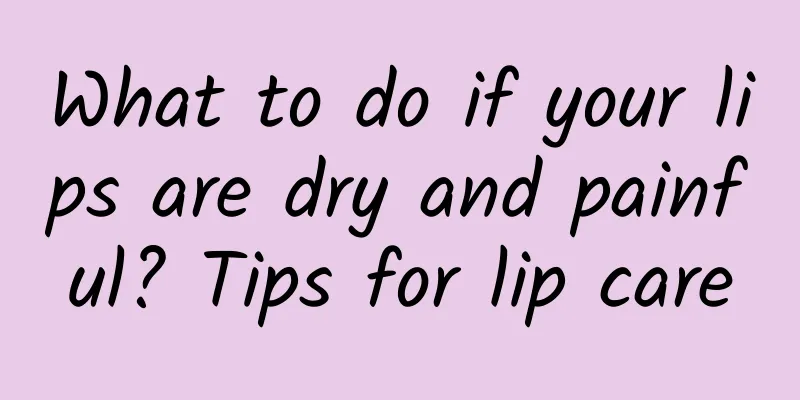How to treat facial seborrheic dermatitis

|
We also call facial seborrheic dermatitis seborrheic eczema. Facial seborrheic dermatitis not only appears on the face of adults but also on the face of babies, so we must do a good job of preventing facial seborrheic dermatitis. So far, we are not very clear about the cause of facial seborrheic dermatitis, so it brings great difficulty to us in treating facial seborrheic dermatitis. We have many ways to treat facial seborrheic dermatitis, but we have to choose according to the actual situation. We can use general treatment methods or some topical medications. 1. General treatment Live a regular life, get enough sleep, adjust your diet, eat more vegetables, limit high-fat and high-sugar foods, avoid drinking alcohol and spicy foods, and avoid excessive mental stress. 2. Topical medication (1) Glucocorticoids are mainly used for skin lesions with severe inflammation. Medium- or high-potency glucocorticoid preparations can be applied externally, which have good therapeutic effects, but should not be used for a long time, especially on the face. Low-potency glucocorticoid preparations (such as hydrocortisone) are less effective and are suitable for infants and young children. (2) Antibacterial drugs: 2% erythromycin ointment or gel, 5% metronidazole cream, or a cream containing 1% chloramphenicol and 0.1% dexamethasone. (3) Selenium sulfide lotion has the effect of killing fungi and inhibiting bacterial growth. It can also reduce sebum secretion and the content of fatty acids in sebum. (4) Zinc pyrithione shampoo: The concentration of zinc pyrithione shampoo is 1% to 2%. In addition to being used on the scalp, it can also be used on other parts of the body, such as the face, brow arches, and trunk. Do not apply to eyelid margins to avoid eye irritation. Apply the medicine to the affected area, leave it on for 1 to 2 minutes, and then wash it off with clean water. Apply 1 to 2 times a day. When symptoms are under control, change to once a day, but you must persist in applying it to avoid recurrence. The shampoo has an inhibitory effect on the proliferation of epidermal cells. In addition, it has a broad-spectrum antibacterial effect and can inhibit the growth of Pityrosporum ovale. (5) Antifungal preparations Antifungal preparations, especially imidazole drugs, have good therapeutic effects. Shampoos or creams containing ketoconazole (2%), itraconazole, econazole, clotrimazole, miconazole, oxiconazole, isoconazole, or ciclopirox and terbinafine (1%) preparations are commonly used. In addition to antifungal effects, antifungal preparations also have multiple effects such as anti-inflammatory, antibacterial and inhibition of cell wall lipid formation. (6) Sulfur and/or salicylic acid lotions and other sulfur and/or salicylic acid have antibacterial and anti-dandruff effects and have a certain therapeutic effect on this disease, but they are not as good as zinc pyrithione and selenium sulfide, and are highly irritating. Coal tar preparations have anti-inflammatory, antibacterial and antimitotic effects, but are colored, smelly and irritating, so they are usually only used on the scalp. 3. Internal medication (1) Glucocorticoids such as prednisone are used to treat cases with large skin lesions and severe inflammation. The course of treatment is usually limited to 7 to 10 days and should not be too long. (2) Tripterygium wilfordii glycosides are suitable for patients with obvious and large-scale inflammation. The effect will be better if combined with low-dose glucocorticoids. (3) Antibiotics: Severe seborrheic dermatitis lesions are often accompanied by bacterial infection (mainly Staphylococcus aureus infection), sometimes even with pustules and enlarged cervical lymph nodes. Appropriate use of antibiotics is beneficial, such as tetracycline or erythromycin. (4) B vitamins include vitamin B2, vitamin B6 and vitamin B complex. Long-term oral administration may have certain benefits for this disease. Above we introduced what facial seborrheic dermatitis is. We know that facial seborrheic dermatitis not only occurs in adults but also in infants, so we must do a good job in preventing and treating facial seborrheic dermatitis. The above article introduces in detail the treatment methods of facial seborrheic dermatitis.
|
<<: Symptoms of facial atopic dermatitis
>>: Facial seborrheic dermatitis treatment
Recommend
Maca side effects and contraindications
Although the traditional Chinese medicine Maca ca...
Symptoms of meniscus injury
In fact, meniscus injury is a common symptom in c...
Stop toothache in 1 minute
We often say that pain is unbearable, especially ...
What diseases can Ginseng Shunqi Powder treat?
Among all Chinese medicinal herbs, ginseng is a r...
Can aloe vera gel and vitamin E be used together?
To take care of their skin, women need to use som...
Can sweet potato and yogurt be eaten together?
Sweet potatoes and yogurt are both foods with rel...
The efficacy of mugwort water bath
As a traditional Chinese medicinal material with ...
What is the pulse of pregnancy? What are the early symptoms?
Generally speaking, when a Chinese medicine pract...
How can lemon whiten your skin? Five ways to make you whiter
Lemon is a kind of fruit that people often eat. I...
What should I do if my hand is scalded by boiling water?
In daily life, hands are not only scalded by hot ...
What are the pros and cons of IVF?
Nowadays, women are under great pressure in life ...
What are the health benefits of Changbai Mountain ginseng?
Changbai Mountain ginseng is also a tonic that ha...
Eyebrow pain chest pain
Sometimes I feel pain in my eyebrows and chest, a...
How to treat ovarian effusion? How to maintain good ovaries
For female friends, once they find that they have...
Contraceptive pills with fewer side effects
Speaking of birth control pills, I believe most p...









